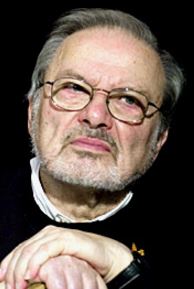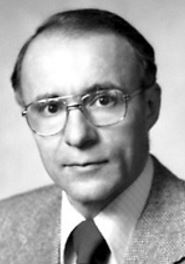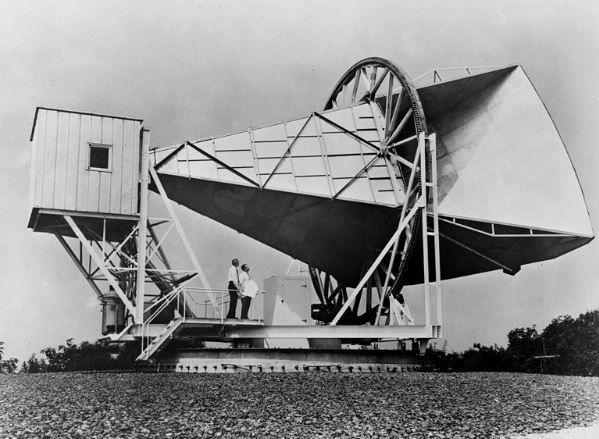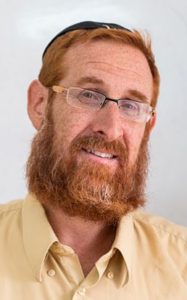Where the Wild Things Are
 Maurice Bernard Sendak (1928-2012) was born in Brooklyn to Polish-Jewish immigrants. He fell in love with books during a lengthy childhood illness, and after watching Disney’s Fantasia at age 12, decided to become an illustrator. Skipping college, Sendak first did illustrations for toy store windows before having his art published in a textbook. He then devoted himself to illustrating children’s books, including many Jewish themed ones like Good Shabbos Everybody. (Sendak once noted that one of his greatest inspirations was his father’s telling of stories from the Torah.) By the late 1950’s, he started writing his own children’s books. His most famous work came in 1963, and made Sendak a household name. Where the Wild Things Are was very controversial when first published, criticized for its edgy theme and “dark” illustrations. Sendak attributed this to his own difficult childhood, having lost many family members in the Holocaust. Nonetheless, the book became hugely popular, and went on to sell over 20 million copies worldwide. It has since been adapted into a Hollywood film and even an opera, and has been ranked as the best picture book of all time. All in all, Sendak authored 22 books, illustrated 90 more, and wrote, directed, or produced seven films. He saw himself not as a children’s author, but an “author who told the truth about children”. Sendak won many awards, including the National Medal of the Arts, and the prestigious Hans Christian Andersen Award for “lasting contribution to children’s literature”. Sendak donated $1 million to New York’s Jewish Board of Family and Children’s Services, and left his precious collection of over 10,000 artworks, books, and manuscripts to be turned into a museum and library. He was a humble man, and avoided book signings because he “couldn’t stand the thought of parents dragging children to wait in line for hours to see a little old man in thick glasses.” After his passing of a stroke at age 83, The New York Times hailed him as “the most important children’s book artist of the 20th century.”
Maurice Bernard Sendak (1928-2012) was born in Brooklyn to Polish-Jewish immigrants. He fell in love with books during a lengthy childhood illness, and after watching Disney’s Fantasia at age 12, decided to become an illustrator. Skipping college, Sendak first did illustrations for toy store windows before having his art published in a textbook. He then devoted himself to illustrating children’s books, including many Jewish themed ones like Good Shabbos Everybody. (Sendak once noted that one of his greatest inspirations was his father’s telling of stories from the Torah.) By the late 1950’s, he started writing his own children’s books. His most famous work came in 1963, and made Sendak a household name. Where the Wild Things Are was very controversial when first published, criticized for its edgy theme and “dark” illustrations. Sendak attributed this to his own difficult childhood, having lost many family members in the Holocaust. Nonetheless, the book became hugely popular, and went on to sell over 20 million copies worldwide. It has since been adapted into a Hollywood film and even an opera, and has been ranked as the best picture book of all time. All in all, Sendak authored 22 books, illustrated 90 more, and wrote, directed, or produced seven films. He saw himself not as a children’s author, but an “author who told the truth about children”. Sendak won many awards, including the National Medal of the Arts, and the prestigious Hans Christian Andersen Award for “lasting contribution to children’s literature”. Sendak donated $1 million to New York’s Jewish Board of Family and Children’s Services, and left his precious collection of over 10,000 artworks, books, and manuscripts to be turned into a museum and library. He was a humble man, and avoided book signings because he “couldn’t stand the thought of parents dragging children to wait in line for hours to see a little old man in thick glasses.” After his passing of a stroke at age 83, The New York Times hailed him as “the most important children’s book artist of the 20th century.”
Words of the Week
It’s a Jewish way of getting through life. You acknowledge what is spectacular and beautiful and also you don’t close your eyes to the pain and the difficulty.
– playwright Tony Kushner, on Maurice Sendak’s books.


 Arno Allan Penzias (b. 1933) was born in Munich. As a six year old, he was evacuated from Nazi Germany through the British Kindertransport rescue operation which saved 10,000 Jewish children. He was later reunited with his parents, who brought the family to New York. Penzias grew up in Brooklyn and went on to study physics. He graduated among the top of his class, then served two years in the US Army as a radar officer. From there, he got a research position at Columbia University’s Radiation Lab, where he helped to develop the maser (a “microwave laser”). After earning a Ph.D in physics from Columbia, Penzias got a job at Bell Labs to do astronomy research with microwave receivers. He was soon joined by Robert Wilson. The two noticed their antenna picking up an inexplicable signal. After ruling out all forms of interference, and carefully cleaning the antenna, the weak signal persisted. The two collaborated with another physicist, Robert Dicke, to show that this signal was the cosmic microwave background (CMB) radiation, the remnants of the universe’s birth, as predicted by the Big Bang Theory. The existence of CMB confirmed that the universe had a beginning, with a burst of radiation, and simultaneously confirmed ancient Jewish teachings about the universe’s origins. The Zohar, a famous mystical commentary on the Torah that was first published some 700 years ago, explains that the universe began with a nikuda hada d’zohar, a singular point of radiance, from which all things were formed. The Zohar explains that this ever-expanding radiance continues to fill the universe, based on the words in the Biblical Book of Daniel (12:3) which describes the “radiance of the firmament”. In fact, this is how the book got its name, Zohar meaning “radiance”. Penzias’ and Wilson’s monumental discovery brought about a beautiful harmony between Torah and science, at once confirming both the modern Big Bang Theory and the holy words of the ancient Jewish Sages. The two physicists won the 1978 Nobel Prize in Physics. Penzias continued his work at Bell Labs for a total of 37 years, rising to the position of Vice President of Research. He was made a Fellow of the American Academy of Arts and Sciences, and the National Academy of Sciences. Penzias later moved to Silicon Valley to advise venture capitalists and tech start-ups. Despite being in his 80s, he is still a venture partner at New Enterprise Associates, and says he has “no plants to retire”.
Arno Allan Penzias (b. 1933) was born in Munich. As a six year old, he was evacuated from Nazi Germany through the British Kindertransport rescue operation which saved 10,000 Jewish children. He was later reunited with his parents, who brought the family to New York. Penzias grew up in Brooklyn and went on to study physics. He graduated among the top of his class, then served two years in the US Army as a radar officer. From there, he got a research position at Columbia University’s Radiation Lab, where he helped to develop the maser (a “microwave laser”). After earning a Ph.D in physics from Columbia, Penzias got a job at Bell Labs to do astronomy research with microwave receivers. He was soon joined by Robert Wilson. The two noticed their antenna picking up an inexplicable signal. After ruling out all forms of interference, and carefully cleaning the antenna, the weak signal persisted. The two collaborated with another physicist, Robert Dicke, to show that this signal was the cosmic microwave background (CMB) radiation, the remnants of the universe’s birth, as predicted by the Big Bang Theory. The existence of CMB confirmed that the universe had a beginning, with a burst of radiation, and simultaneously confirmed ancient Jewish teachings about the universe’s origins. The Zohar, a famous mystical commentary on the Torah that was first published some 700 years ago, explains that the universe began with a nikuda hada d’zohar, a singular point of radiance, from which all things were formed. The Zohar explains that this ever-expanding radiance continues to fill the universe, based on the words in the Biblical Book of Daniel (12:3) which describes the “radiance of the firmament”. In fact, this is how the book got its name, Zohar meaning “radiance”. Penzias’ and Wilson’s monumental discovery brought about a beautiful harmony between Torah and science, at once confirming both the modern Big Bang Theory and the holy words of the ancient Jewish Sages. The two physicists won the 1978 Nobel Prize in Physics. Penzias continued his work at Bell Labs for a total of 37 years, rising to the position of Vice President of Research. He was made a Fellow of the American Academy of Arts and Sciences, and the National Academy of Sciences. Penzias later moved to Silicon Valley to advise venture capitalists and tech start-ups. Despite being in his 80s, he is still a venture partner at New Enterprise Associates, and says he has “no plants to retire”.
